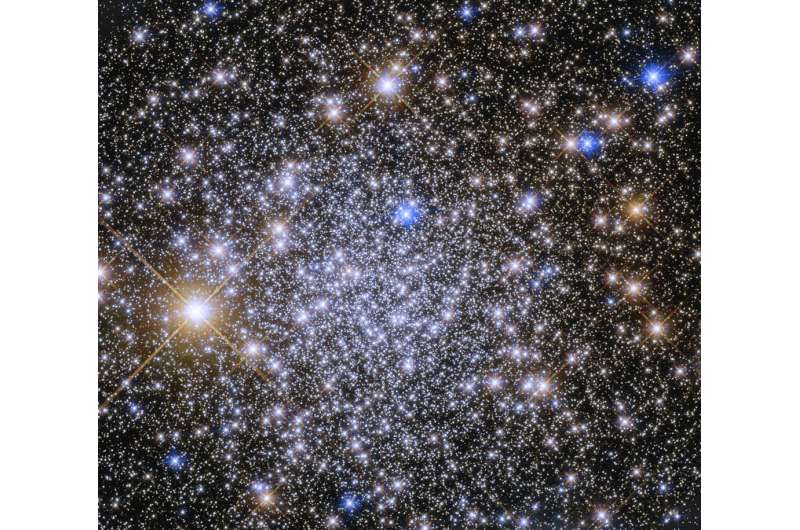Image: Hubble glimpses a glittering gathering of stars

This glittering gathering of stars is Pismis 26, a globular star cluster located about 23,000 light-years away. Many thousands of stars gleam brightly against the black backdrop of the image, with some brighter red and blue stars located along the outskirts of the cluster. The Armenian astronomer Paris Pismis first discovered the cluster in 1959 at the Tonantzintla Observatory in Mexico, granting it the dual name Tonantzintla 2.
Pismis 26 is located in the constellation Scorpius near the galactic bulge, which is an area near the center of our galaxy that holds a dense, spheroidal grouping of stars that surrounds a black hole. Due to its location within the dust-heavy bulge, a process called "reddening" occurs, where dust scatters shorter wavelength blue light while longer wavelength red light passes through. Reddening distorts the apparent color of cosmic objects. Globular clusters are groups of stars held together by mutual gravitational attraction. They contain thousands of tightly packed stars and appear almost spherical in shape. Astronomers recently used NASA's Hubble Space Telescope to study visible and infrared light from Pismis 26 to determine the cluster's reddening, age, and metallicity.
The stars of Pismis 26 have high metallicity, meaning they contain a high fraction of elements heavier than hydrogen and helium, the most abundant elements in the universe. Specifically, the stars are rich in the element nitrogen, which is typical of stars in bulge clusters and has led scientists to believe that populations of differently-aged stars are present in the cluster. Pismis 26 has also likely lost a sizable portion of its mass over time due to a gravitational force called the strong inner galaxy tidal field, which the inner galaxy exerts on star clusters in the galactic bulge, causing their outer layers to pull away. Researchers estimate the age of the cluster to be 12 billion years old.
Provided by NASA's Goddard Space Flight Center





















